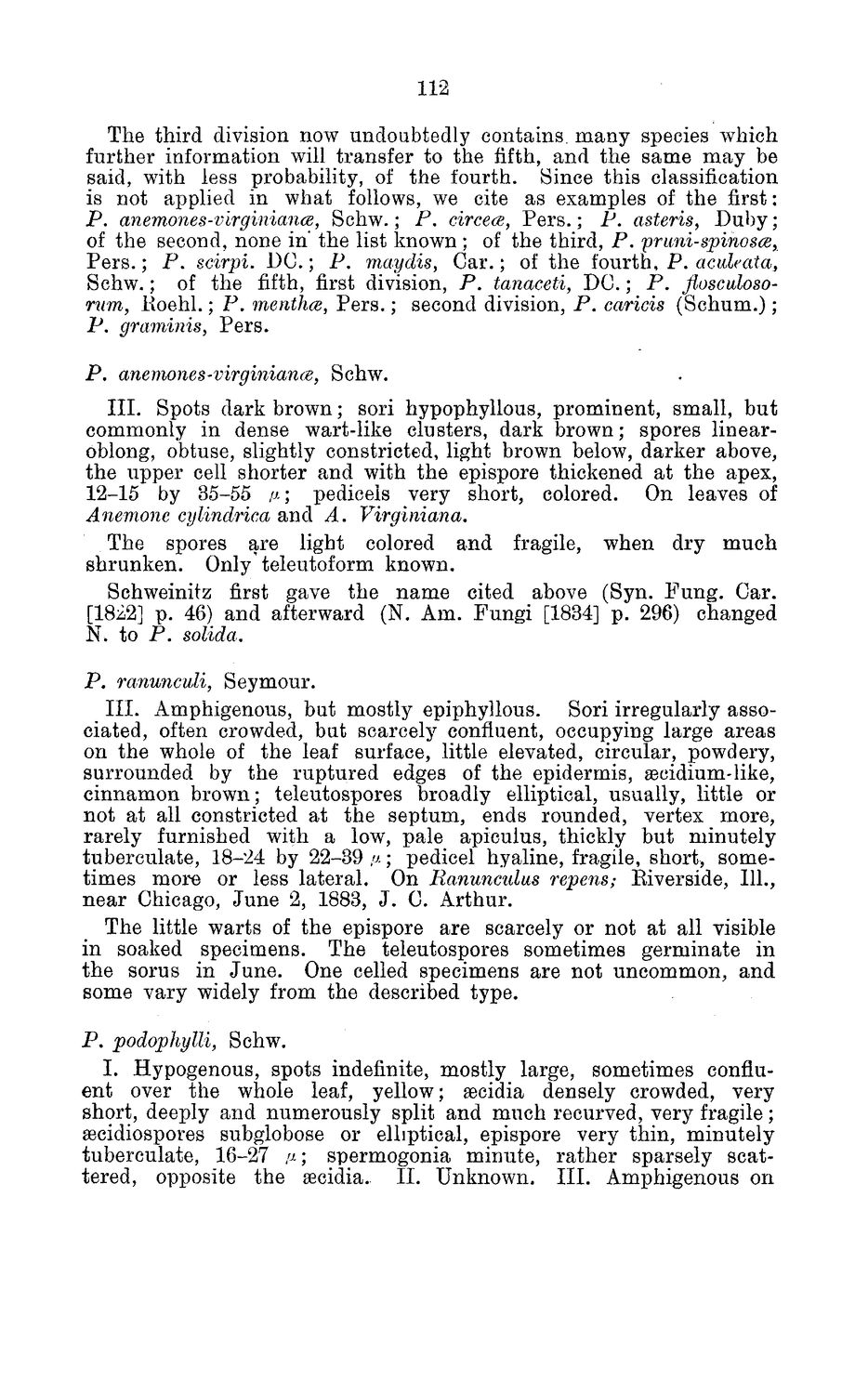| |
| |
Caption: Board of Trustees Minutes - 1884
This is a reduced-resolution page image for fast online browsing.

EXTRACTED TEXT FROM PAGE:
112 The third division now undoubtedly contains, many species which further information will transfer to the fifth, and the same may be said, with less probability, of the fourth. Since this classification is not applied in what follows, we cite as examples of the first: P. anemones-virginiancB, Schw.; P . circece, Pers.; P. asteris, Duby; of the second, none in* the list known ; of the third, P. primi-spinosce, Pers.; P . scirpi. DC.; P. maydis, Car.; of the fourth, P. aculeata, Schw.; of the fifth, first division, P. tanaceti, DC.; P . flosculosorum, Koehl.; P . menthce, Pers.; second division, P . caricis (Schum.) ; P. graminis, Pers. P . anemones-virginiance, Schw. III. Spots dark brown; sori hypophyllous, prominent, small, but commonly in dense wart-like clusters, dark brown; spores linearoblong, obtuse, slightly constricted, light brown below, darker above, the upper cell shorter and with the epispore thickened at the apex, 12-15 by 35-55 y.\ pedicels very short, colored. On leaves of Anemone cylindrica and A. Virginiana. The spores are light colored and fragile, when dry much shrunken. Only'teleutoform known. Schweinitz first gave the name cited above (Syn. Fung. Car. [18*2] p. 46) and afterward (N. Am. Fungi [1834] p. 296) changed N. to P . solida. P. ranunculi, Seymour. III. Amphigenous, but mostly epiphyllous. Sori irregularly associated, often crowded, but scarcely confluent, occupying large areas on the whole of the leaf surface, little elevated, circular, powdery, surrounded by the ruptured edges of the epidermis, secidium-like, cinnamon brown; teleutospores broadly elliptical, usually, little or not at all constricted at the septum, ends rounded, vertex more, rarely furnished with a low, pale apiculus, thickly but minutely tuberculate, 18-24 by 22-39 ,«; pedicel hyaline, fragile, short, sometimes more or less lateral. On Ranuncidus repens; Kiverside, 111., near Chicago, June 2, 1883, J. C. Arthur. The little warts of the epispore are scarcely or not at all visible in soaked specimens. The teleutospores sometimes germinate in the sorus in June. One celled specimens are not uncommon, and some vary widely from the described type. P. podophylli, Schw. I. Hypogenous, spots indefinite, mostly large, sometimes confluent over the whole leaf, yellow; aecidia densely crowded, very short, deeply and numerously split and much recurved, very fragile; aecidiospores subglobose or elliptical, epispore very thin, minutely tuberculate, 16-27 /i; spermogonia minute, rather sparsely scattered, opposite the secidia. II. Unknown. III. Amphigenous on
| |